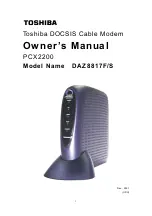
Page
26
RS
‐
232/485
RF
Modem
Product
Manual
–
MAN0782
‐
02
RB and RO parameters are not applied to subsequent packets, meaning that once transmission
has begun, it will continue uninterrupted until the DI buffer is empty or the streaming limit (TT)
has been reached. As with the first packet, the payload of each subsequent packet includes up to
the maximum packet size (PK), and the transmitting modem checks for more pending data near
the end of each packet.
The streaming limit (TT) specifies the maximum number of bytes that the transmitting modem
will send in one transmission event, which may consist of many packets and retries. If the TT
parameter is reached, the transmitting modem will force a random delay of 1 to RN delay slots
(exactly 1 delay slot if RN is zero). Each packet is counted only once toward TT, no matter how
many times the packet is retransmitted.
Subsequent packets in acknowledged mode are similar to those in streaming mode, with the
addition of an acknowledgement between each packet, and the possibility of retransmissions.
Subsequent packets are sent without an RF initializer, as the receiving modems are already
synchronized to the transmitting modem from the preceding packet(s) and they remain
synchronized for the duration of the transmission event. Each retransmission of a packet includes
an RF initializer.
Once the transmitting modem has sent all pending data or has reached the TT limit, the
acknowledged transmission event is completed. The transmitting modem will not transmit again
for exactly RN delay slots, if the local RN parameter is set to a nonzero value. The receiving
modem will not transmit for a random number of delay slots between 0 and (RN-1), if the local
RN parameter is set to a nonzero value. These delays are intended to lessen congestion following
long bursts of packets from a single transmitting modem, during which several receiving modems
may have themselves become ready to transmit.
















































